
The Vibrant Heart of Ulaanbaatar: Sukhbaatar District
Explore the dynamic Sukhbaatar District in Ulaanbaatar, where history meets modernity, offering a rich cultural experience and vibrant urban lifestyle.
Sukhbaatar District, often considered the pulsating core of Ulaanbaatar, offers an eclectic blend of history, culture, and modernity. Named after Damdin Sukhbaatar, a leader in Mongolia’s revolution, this district is home to the iconic Sukhbaatar Square. The square, with its grand statues and historic buildings, provides a fascinating glimpse into Mongolia’s past and present. Here, you can marvel at the grandeur of the Government Palace, the National History Museum, and the majestic statue of Chinggis Khaan, which stands as a proud symbol of Mongolia's rich heritage. A visit to Sukhbaatar District is incomplete without exploring its vibrant arts and cultural scene. The district boasts the National Academic Theatre of Opera and Ballet of Mongolia, where you can witness captivating performances that blend traditional Mongolian art forms with contemporary styles. Art enthusiasts will also enjoy the Zanabazar Museum of Fine Arts, which houses an impressive collection of Mongolian and Asian art, including works by the revered artist and sculptor, Zanabazar. For those seeking a taste of modern Ulaanbaatar, Sukhbaatar District does not disappoint. The area is dotted with trendy cafes, international restaurants, and bustling shopping centers. The State Department Store, a relic from the Soviet era, offers a unique shopping experience with a wide range of goods, from traditional Mongolian crafts to modern electronics. For a more contemporary shopping experience, head to the Shangri-La Mall, where you can find high-end brands and enjoy upscale dining options. Nature lovers will appreciate the district’s proximity to the serene Bogd Khan Mountain, a UNESCO Biosphere Reserve. Just a short drive away, this natural wonder provides a perfect escape from the urban hustle and bustle, offering hiking trails, stunning views, and a chance to experience Mongolia’s untouched wilderness.
Local tips in Sukhbaatar District
- Visit Sukhbaatar Square early in the morning to avoid crowds and capture stunning photos in the soft morning light.
- Attend a performance at the National Academic Theatre of Opera and Ballet to experience Mongolian culture firsthand.
- Stop by a local café to try traditional Mongolian milk tea, known as Suutei Tsai.
- Bring comfortable walking shoes as the district is best explored on foot.
- Check the schedule for exhibitions and events at the Zanabazar Museum of Fine Arts for a deeper cultural immersion.
The Vibrant Heart of Ulaanbaatar: Sukhbaatar District
Sukhbaatar District, often considered the pulsating core of Ulaanbaatar, offers an eclectic blend of history, culture, and modernity. Named after Damdin Sukhbaatar, a leader in Mongolia’s revolution, this district is home to the iconic Sukhbaatar Square. The square, with its grand statues and historic buildings, provides a fascinating glimpse into Mongolia’s past and present. Here, you can marvel at the grandeur of the Government Palace, the National History Museum, and the majestic statue of Chinggis Khaan, which stands as a proud symbol of Mongolia's rich heritage. A visit to Sukhbaatar District is incomplete without exploring its vibrant arts and cultural scene. The district boasts the National Academic Theatre of Opera and Ballet of Mongolia, where you can witness captivating performances that blend traditional Mongolian art forms with contemporary styles. Art enthusiasts will also enjoy the Zanabazar Museum of Fine Arts, which houses an impressive collection of Mongolian and Asian art, including works by the revered artist and sculptor, Zanabazar. For those seeking a taste of modern Ulaanbaatar, Sukhbaatar District does not disappoint. The area is dotted with trendy cafes, international restaurants, and bustling shopping centers. The State Department Store, a relic from the Soviet era, offers a unique shopping experience with a wide range of goods, from traditional Mongolian crafts to modern electronics. For a more contemporary shopping experience, head to the Shangri-La Mall, where you can find high-end brands and enjoy upscale dining options. Nature lovers will appreciate the district’s proximity to the serene Bogd Khan Mountain, a UNESCO Biosphere Reserve. Just a short drive away, this natural wonder provides a perfect escape from the urban hustle and bustle, offering hiking trails, stunning views, and a chance to experience Mongolia’s untouched wilderness.
Iconic landmarks you can’t miss
The Fine Arts Zanabazar Museum
Explore Mongolia's artistic heritage at the Fine Arts Zanabazar Museum, showcasing Buddhist art and contemporary works in Ulaanbaatar.

Сүхбаатарын хөшөө
Discover the vibrant cultural heart of Ulaanbaatar at Sukhbaatar Square, a historic landmark that embodies Mongolia's spirit and heritage.

Ulaanbaatar Sign
Discover the vibrant Ulaanbaatar Sign, a colorful landmark representing Mongolia's rich culture and a perfect photo opportunity for all visitors.

Estátua de Marco Polo
Explore the Statue of Marco Polo in Ulaanbaatar, a stunning tribute to the legendary explorer, rich in history and cultural significance.
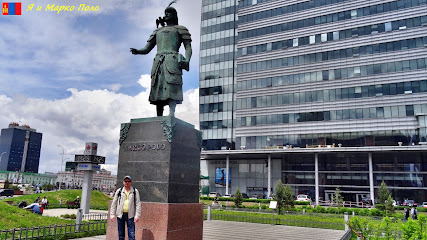
SDG Wall
Experience the SDG Wall in Ulaanbaatar: a vibrant historical landmark where art and sustainability converge, showcasing local creativity and global responsibility.

Аав нартаа
Explore All-Narta, a historical landmark in Ulaanbaatar, Mongolia, where rich culture and serene landscapes come together to tell timeless stories.

Алтай хаан угалз
Discover the stunning Altai Khan Ugalz in Ulaanbaatar, where breathtaking landscapes meet rich cultural experiences in Mongolia's hidden gem.

SUKHBAATAR SQUARE
Discover Sukhbaatar Square, Ulaanbaatar's historical landmark, where Mongolia's past meets its vibrant present in the heart of the capital.

АНХНЫ ХОЛБООНЫ БАЙШИН
Explore the Ankhny Holboony Bayshin, a historical landmark in Ulaanbaatar showcasing Mongolia's rich cultural heritage and stunning architecture.

Sukhbaatar statue
Explore Ulaanbaatar's Sukhbaatar Statue, a monumental tribute to Mongolia's revolutionary past and a vibrant cultural hub in the heart of the city.

Unmissable attractions to see
Монголын Үндэсний Музей
Explore Mongolia's history and culture at the National Museum, showcasing ancient artifacts and modern art in Ulaanbaatar.

GANDANTEGCHENLING
Discover the spiritual heart of Mongolia at Gandantegchenling, a serene Buddhist temple in Ulaanbaatar steeped in rich cultural heritage.

Ulaanbaatar Sign
Discover the iconic Ulaanbaatar Sign, a vibrant symbol of Mongolia's capital, perfect for memorable photographs and cultural immersion.

Essential places to dine
Rosewood Kitchen + Enoteca
Experience authentic Italian cuisine in Ulaanbaatar at Rosewood Kitchen + Enoteca – where fresh ingredients meet exquisite flavors.

La Viva Restaurant
Experience authentic Italian flavors at La Viva Restaurant in Ulaanbaatar, where every meal is a delightful journey through Italy.

Il Cavallo
Discover exquisite Italian cuisine at Il Cavallo in Ulaanbaatar, where stunning views meet exceptional flavors for an unforgettable dining experience.

Bosco Verde Italian Vegan Restaurant
Discover Bosco Verde: A delightful vegan restaurant in Ulaanbaatar offering authentic Italian dishes made from fresh ingredients.

Ayanchin Downtown Restaurant
Experience authentic Mongolian flavors blended with international cuisine at Ayanchin Downtown Restaurant in Ulaanbaatar.

Zochin mongol zoog-4
Experience authentic Mongolian BBQ at Zochin Mongol Zoog-4 in Ulaanbaatar - where flavors meet tradition!
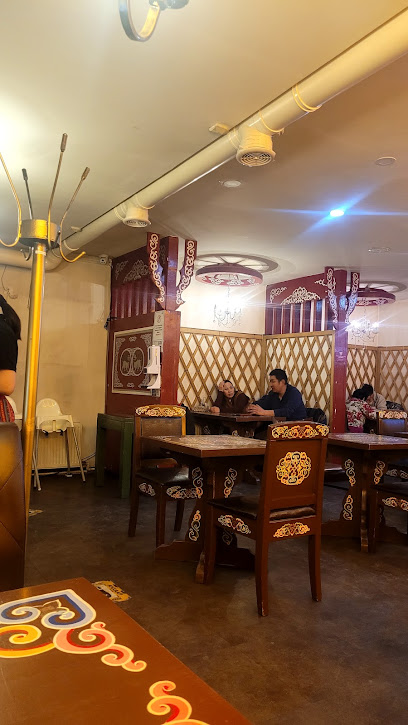
Il Fiore Italian Restaurant
Savor authentic Italian cuisine in Ulaanbaatar at Il Fiore Restaurant - where every dish tells a story.

ALBERO restaurant
Experience authentic Italian flavors at ALBERO Restaurant in Ulaanbaatar - where delicious cuisine meets warm hospitality.

Agnista Restaurant
Discover Agnista Restaurant in Ulaanbaatar for an unforgettable vegan dining experience filled with local flavors and sustainable practices.

TIME OUT RESTAURANT
Experience the flavors of Mongolia at Time Out Restaurant, where local cuisine meets global influences in a cozy setting.

Markets, malls and hidden boutiques
Ulaanbaatar Department Store
Discover the vibrant Ulaanbaatar Department Store, where shopping meets modern Mongolian culture and local flavors in the heart of the city.
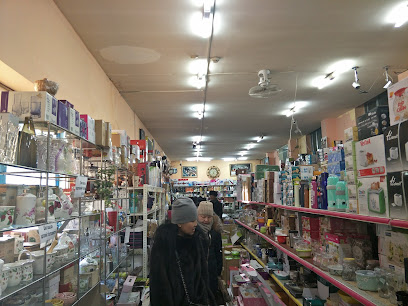
Mary & Martha Mongolia
Explore Mary & Martha Mongolia: Your destination for artistic handicrafts and authentic fair trade souvenirs in Ulaanbaatar.

Tsagaan Alt Wool Shop
Explore Tsagaan Alt Wool Shop for authentic Mongolian wool garments and unique souvenirs in Ulaanbaatar.

SOUVENIR SHOP
Explore the heart of Mongolia through unique souvenirs at Ulaanbaatar's charming gift shop, where every purchase tells a story.

Чандмань
Explore Чандмань Gift Shop in Ulaanbaatar for unique Mongolian crafts and souvenirs that capture the essence of Mongolian culture.

wOOw unusual gift shop
Explore wOOw Unusual Gift Shop in Ulaanbaatar for unique souvenirs and local artistry that capture the essence of Mongolia.

Grand Boutique Shop
Explore the Grand Boutique Shop in Ulaanbaatar for a unique blend of traditional Mongolian fashion and modern styles, perfect for every wardrobe.
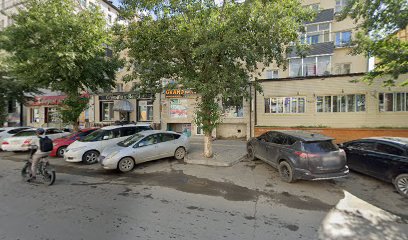
Too cute to handle online shop
Explore Too Cute to Handle, Ulaanbaatar's charming gift shop for unique souvenirs and local artisan crafts, perfect for every traveler.

Your Gift Store
Discover unique Mongolian souvenirs and gifts at Your Gift Store, a treasure trove of local craftsmanship in Ulaanbaatar.

Цэцгийн дэлгүүр Хосоо
Explore Цэцгийн дэлгүүр Хосоо in Ulaanbaatar for stunning floral arrangements and unique gifts that embody Mongolian culture and craftsmanship.

Essential bars & hidden hideouts
SALM PUB & BAR
Discover Ulaanbaatar's nightlife at SALM PUB & BAR, where vibrant atmosphere and delicious drinks await.

Chinggis Club
Experience the vibrant tastes of Mongolia at Chinggis Club, a brewpub offering local cuisine and craft beers in Ulaanbaatar's heart.

Elixir Coffee & Wine Bar
Discover Elixir Coffee & Wine Bar in Ulaanbaatar: A perfect blend of rich coffee and exquisite wines in a cozy setting.

AB
Experience the vibrant nightlife of Ulaanbaatar at AB, a dynamic restaurant and karaoke lounge serving delicious food and endless entertainment.

Cortez
Experience the vibrant nightlife of Ulaanbaatar at Cortez, a stylish bar and cafe with creative drinks and a lively atmosphere.

Bacco Mongolia
Enjoy an exquisite cocktail experience at Bacco Mongolia, Ulaanbaatar’s premier cocktail bar blending local flavors and international flair.

Owl Cafe and Bar
Experience the vibrant nightlife at Owl Cafe and Bar in Ulaanbaatar, where cozy ambiance meets exquisite drinks and friendly conversations.
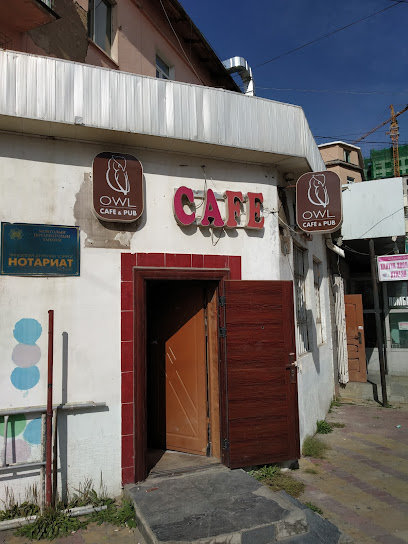
Хангал(Khangal) Pub&Restaurant
Discover the lively spirit of Ulaanbaatar at Khangal Pub & Restaurant, where delicious cuisine meets vibrant nightlife.

d giin ger
Experience the vibrant nightlife of Ulaanbaatar at D Giin Ger, where traditional Mongolian culture meets modern bar vibes.

Ariunboldiih
Experience the lively atmosphere and diverse drink offerings at Ariunboldiih, a standout bar in Ulaanbaatar's nightlife.

Local Phrases
-
- HelloСайн уу
[Sain uu] - GoodbyeБаяртай
[Bayartai] - YesТийм
[Tiim] - NoҮгүй
[Ugui] - Please/You're welcomeБаярлалаа
[Bayarlalaa] - Thank youБаярлалаа
[Bayarlalaa] - Excuse me/SorryУучлаарай
[Uuchlaarai] - How are you?Та яах вэ?
[Ta yaakh ve?] - Fine. And you?Сайн байна. Та надад?
[Sain baina. Ta nadad?] - Do you speak English?Та англи хэл дууддаг уу?
[Ta angli khel duuddag uu?] - I don't understandБи ойлгохгүй байна
[Bi oilgokhgui baina]
- HelloСайн уу
-
- I'd like to see the menu, pleaseМенюг харахыг хүсч байна
[Menyug kharakhig khüsch baina] - I don't eat meatБи үхий амьтан хоолоо хоогой
[Bi ükhi amütan khooloo khoogoi] - Cheers!Эрүүл мэндийн төлөө
[Eruul mendii tölöö] - I would like to pay, pleaseТөлбөрөө төлөөч
[Tölböröö tölööch]
- I'd like to see the menu, pleaseМенюг харахыг хүсч байна
-
- Help!Тусламж!
[Tuslamzh!] - Go away!Алга!
[Alga!] - Call the Police!Дэлхийд хүндэтгэ!
[Delkhii khündetge!] - Call a doctor!Эмч ханд!
[Emch khand!] - I'm lostБи гарсан байна
[Bi garsan baina] - I'm illБи эм байна
[Bi em baina]
- Help!Тусламж!
-
- I'd like to buy...Би ... авахыг хүсч байна
[Bi ... avakhig khüsch baina] - I'm just lookingБи зөвхөн харж байна
[Bi zövkhhön kharkh baina] - How much is it?Энэ хэмжээ хэдэн болох вэ?
[Ene khemjee kheden bolokh ve?] - That's too expensiveЭнэ хэтэрхий үнэтэй байна
[Ene kheterkhii ünetei baina] - Can you lower the price?Та үнийг бууруулж чадах уу?
[Ta üniig buuruulzh chadakh uu?]
- I'd like to buy...Би ... авахыг хүсч байна
-
- What time is it?Одоо хэдэн цаг байна вэ?
[Odo kheden tsag baina ve?] - It's one o'clockНэг цаг байна
[Neg tsag baina] - Half past (10)Арван цагын хойно
[Arvan tsagyn khoiino] - MorningӨглөө
[Öglöö] - AfternoonОрой
[Oroi] - EveningОрой
[Oroi] - YesterdayӨчигдөр
[Öchigdör] - TodayӨнөөдөр
[Önöödör] - TomorrowМаргааш
[Margash] - 1Нэг
[Neg] - 2Хоёр
[Khoyor] - 3Гурван
[Gurvan] - 4Дөрөв
[Döröv] - 5Таван
[Tavan] - 6Зургаа
[Zurgaa] - 7Долоо
[Doloo] - 8Найм
[Naim] - 9Ес
[Es] - 10Арван
[Arvan]
- What time is it?Одоо хэдэн цаг байна вэ?
-
- Where's a/the...?Хаана байна вэ?
[Khaana baina ve?] - What's the address?Газрын хаяг хэн байна вэ?
[Gazryn khayag khen baina ve?] - Can you show me (on the map)?Та намайг (газрын зураг дээр) харуулах уу?
[Ta namaig (gazryn zurag deer) kharuulakh uu?] - When's the next (bus)?Дараах (автобус) хэн байна вэ?
[Daraakh (avtobus) khen baina ve?] - A ticket (to ....)Тасалбар (.... руу)
[Tasalbar (.... ruu)]
- Where's a/the...?Хаана байна вэ?
History of Sukhbaatar District
-
Sukhbaatar District is integral to the history of Ulaanbaatar, which was founded in 1639 as a mobile city, initially known as Örgöö. The district's historical significance grew when the city was permanently established at its current location in 1778. Sukhbaatar's central square, now known as Sukhbaatar Square, was named after the revolutionary hero Damdin Sukhbaatar, who played a crucial role in Mongolia's fight for independence from Qing rule.
-
Sukhbaatar District witnessed pivotal events during the Mongolian Revolution of 1921. This movement was characterized by the overthrow of the Mongolian People's Party and the establishment of the first socialist state in Asia. Sukhbaatar Square became a gathering point for revolutionary activities, symbolizing the aspirations of the Mongolian people for freedom and sovereignty.
-
Throughout the 20th century, Sukhbaatar District emerged as a cultural and administrative hub for Ulaanbaatar. The construction of significant buildings, including the State Academic Theater of Opera and Ballet and the National Museum of Mongolia, reflects the district's role in shaping Mongolia's cultural identity. The blend of traditional Mongolian architecture with Soviet-style structures marks an important phase in the district's urban development.
-
Following the collapse of the Soviet Union in 1991, Sukhbaatar District faced numerous challenges, including economic transition and social change. However, it has also experienced significant modernization and urban development, with an influx of businesses, foreign investment, and international tourism. This transformation has made Sukhbaatar a vibrant area that showcases the dynamic nature of contemporary Mongolian society.
-
Sukhbaatar District hosts various cultural festivals and events that celebrate Mongolia's rich heritage. Notably, the Naadam Festival, which occurs every July, is a major event featuring traditional sports such as wrestling, horse racing, and archery. The district's public spaces and parks come alive with festivities, drawing locals and tourists alike to partake in these time-honored traditions that reflect the spirit and resilience of the Mongolian people.
Sukhbaatar District Essentials
-
Sukhbaatar District is centrally located in Ulaanbaatar, making it easily accessible from other neighborhoods. From the Chinggis Khaan International Airport, you can take a taxi or arrange for an airport shuttle, which typically takes about 30-40 minutes depending on traffic. Within the city, the district is well-served by public transport, including buses and microbuses (marshrutkas) that connect to various neighborhoods. The main train station is also nearby, providing access to regional and international rail services.
-
Sukhbaatar District is pedestrian-friendly, with many attractions within walking distance. Public buses and microbuses operate throughout the district, offering an affordable way to navigate the area. Taxis are readily available and can be hailed on the street or booked via mobile apps. Bicycles can be rented from various local shops if you prefer a more active approach to exploring the district.
-
Sukhbaatar District is generally safe for tourists; however, standard precautions should be taken. Avoid displaying valuables and be cautious in crowded areas. Some neighborhoods, particularly those further from the center, may have higher instances of petty crime. It's advisable to stay in well-lit areas at night and to be aware of your surroundings. The area around the Central Market can be busy and may require extra vigilance.
-
In case of emergency, dial 102 for police, 103 for medical assistance, and 105 for fire services. The main hospitals and clinics are equipped to handle emergencies, and it is recommended to have travel insurance that covers medical costs. For minor health issues, pharmacies are available throughout Sukhbaatar District.
-
Fashion: Do dress modestly, especially when visiting religious sites or traditional areas. Don't wear revealing clothing in public. Religion: Do respect local customs; when visiting temples or monasteries, cover your shoulders and knees. Public Transport: Do offer your seat to the elderly and pregnant women. Don't eat or drink while using public transport. Greetings: Do greet locals with a smile and a handshake. Don't use overly casual language until you know someone better. Eating & Drinking: Do try local dishes and be open to food offerings. Don't waste food, as this is considered impolite.
-
To experience Sukhbaatar District like a local, visit the Sukhbaatar Square early in the morning to see locals exercising or gathering. Explore the small cafes and eateries for authentic Mongolian cuisine away from tourist spots. Engage with local vendors at the State Department Store for unique souvenirs and handicrafts. Consider attending local festivals or events, which are often advertised on community boards or social media, to immerse yourself in the culture.
Nearby Cities to Sukhbaatar District
-
Things To Do in Zuunmod
-
Things To Do in Semey
-
Things To Do in Incheon
-
Things To Do in Seoul
-
Things To Do in Suwon
-
Things To Do in Chuncheon
-
Things To Do in Daejeon
-
Things To Do in Jeonju
-
Things To Do in Pavlodar
-
Things To Do in Gwangju
-
Things To Do in Mokpo
-
Things To Do in Andong
-
Things To Do in Suncheon
-
Things To Do in Daegu
-
Things To Do in Pohang











